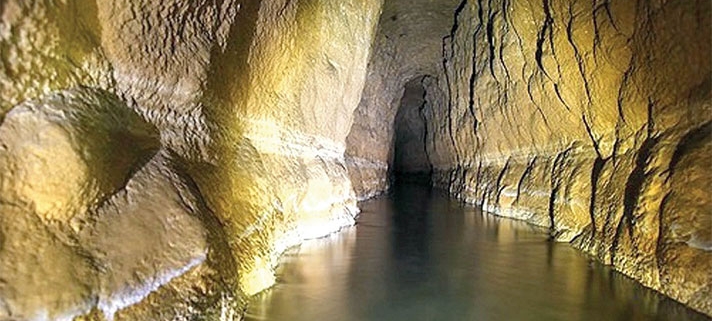Persian Qanat: System, Structure, famous Iran Qanats
There are arid regions in Iran with no river curving or crawling on it; with the lowest amount of rain touching its body, yet settlements initiate and thrive in them. Living in these areas is only possible if the water is transferred to the region in an inexpensive and uncomplicated way. The invention of Qanat was a brilliant solution to this matter. Qanat was born three millenniums ago in the deserts of Iran as the most effective technique for the best adaptation to arid areas.
Qanat is a tunnel system that carries water from a bed source of higher elevation to flatlands. It consists of a series of vertical wells built along a gentle slope that is connected to a horizontal duct at the bottom. The word “qanat” is derived from the Persian term “kanāt,” meaning “channel” or “conduit.”

how does a qanat work?
The duct must have enough space for Qanat workers to move and dig in it. Vertical shafts are for removing the excavated material and supplying oxygen to workers. Also, they provide proper access to different parts of the duct for repair and maintenance. Mother well is the first well that is the deepest of all. The tallest Mother Well in Iran is 300m deep in Gonabad, Razavi Khorasan Province.
The final destination of a Qanat is Mazhar-e Qanat where the water flows to the surface after its long voyage.
According to the Iranian Ministry of Energy, there are 363000 Qanats in Iran. For each of these Qanats, If the average length of the duct is 6km and the total depth of wells is 4km with a mouth with a one-meter diameter, there will be 376068 km of soil which is 9.4 times longer than the earth’s equator and covers 97.9% of the distance between the earth and the moon.
Vazvan & Moon Qanat in Isfahan
One remarkable Qanat in Iran is Vazvan in Isfahan province. The extraordinary character of Vazvan is that its duct is dug in stone and there are dams in some wells to save water during winter and use it at other times of the year. This Qanat was built during the Sassanid era (224–651) and is one of eleven Qanats registered in the UNESCO world heritage list.
Another unique Qanat is Moon in Ardestan, Isfahan province. Moon has two ducts at two levels. The first duct is 30m below the ground and the second is 3m higher at 27m depth. Water running in the second duct does not transmit to the duct below.
Historical Significance of Qanats
The creation of Qanat goes back to the 7th century BC in Iran but during Achaemenid Empire, it had a major extension throughout the territory. Qanat specialists started building numerous Qanats from the shores of the Mediterranean Sea to Chinese Turkistan which resulted in expanding and establishing settlements in dry regions of Persia. Arabs had a share in extending this water system worldwide through their invasions across North Africa, Sicily, and Spain.
Persian Qanats have not only shaped the landscape but also influenced the cultural and social fabric of Iran. These remarkable water systems have been celebrated in Persian literature, art, and architecture, emphasizing their importance in Persian civilization.
Qanats have also played a significant role in urban development, allowing the establishment of cities and towns in arid regions. Their presence enabled the growth of communities along the qanat routes, fostering trade, and supporting human settlements.
On July 15, 2016, the World Heritage Committee of the UN Educational, Scientific and Cultural Organization (UNESCO) met in Istanbul, Turkey, and registered eleven Qanats in different provinces such as Kerman, Khorasan Razavi, Yazd, Arak, and Isfahan.
Are Qanats Still in Use Today?
While the traditional use of qanats has declined, some are still functional and continue to provide water in certain regions. The qanats principles and engineering concepts continue to inspire modern water management practices. Some contemporary applications and adaptations of qanats include Sustainable Urban Planning, Revitalization Projects, and Educational Initiatives.
The Persian Qanat system stands as a testament to the ingenuity and resourcefulness of ancient civilizations in managing water resources. These remarkable underground tunnels have not only sustained communities for centuries but also offer valuable insights into sustainable water management practices. By learning from the wisdom of the past and embracing innovative approaches, we can address the challenges of water scarcity and build a more sustainable future.
Are you planning to travel to Iran? Check out our Iran tours.






Leave a Reply
Want to join the discussion?Feel free to contribute!